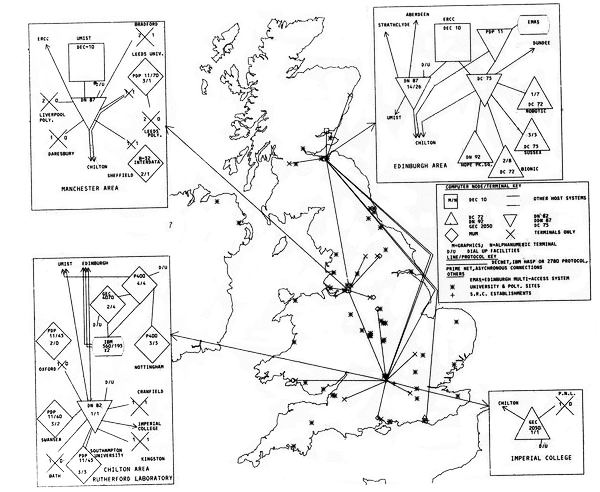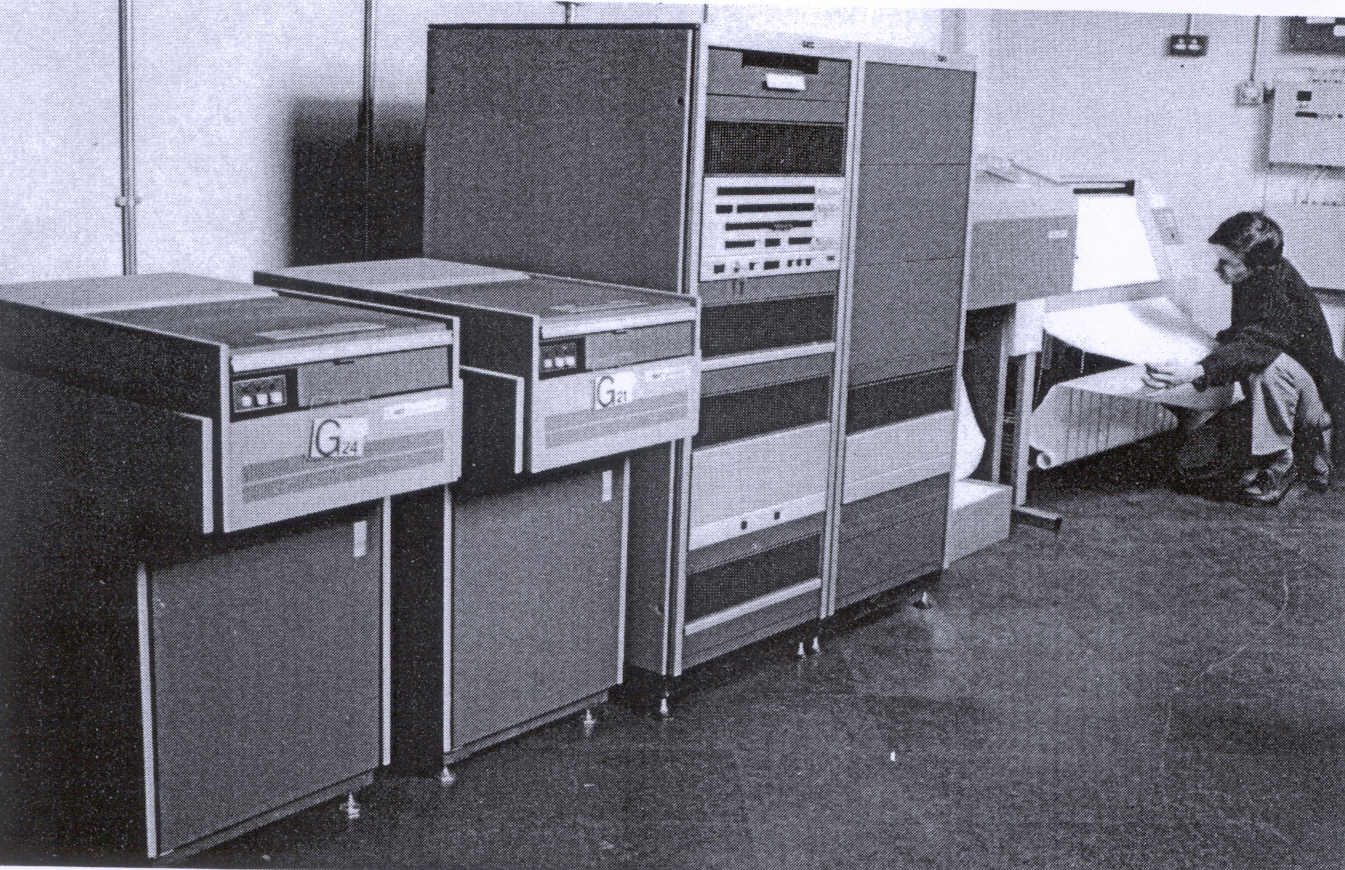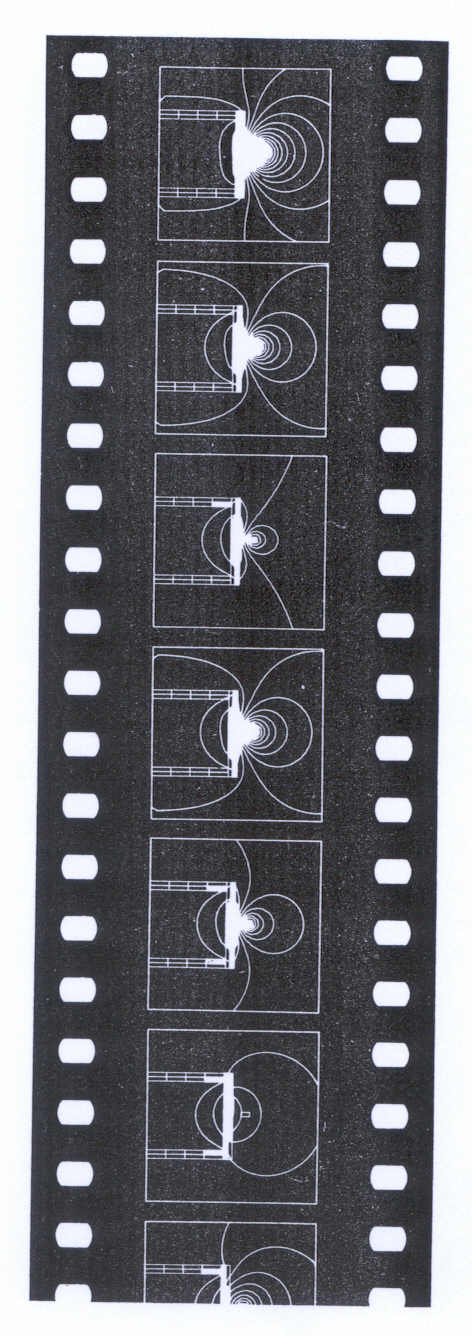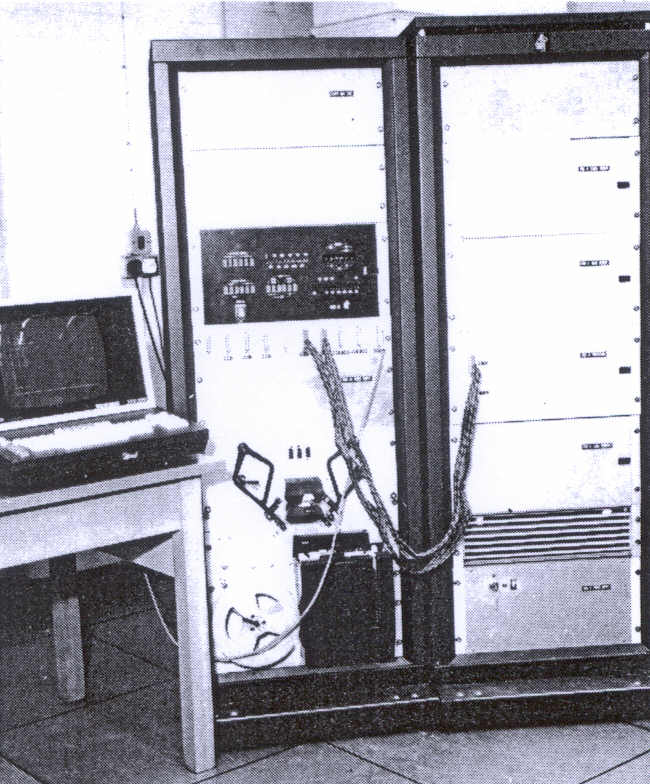

An intimate dialogue between a computer and a researcher or designer can effectively increase man's creativity and extend his memory. This kind of dialogue is called interactive computing - in which the designer himself becomes part of the computation, taking decisions and guiding the step-by-step progress towards solving the problem.
Modern technology is becoming increasingly complex and demands extensive facilities for modelling and simulation. In 1975 a Technical Group on Engineering Requirements pointed out that the facilities for interactive computing available to engineering faculties in universities and polytechnics in the UK were inadequate. The SRC, in accepting the Technical Group's recommendations, took a major initiative by setting up a national Interactive Computing Facility (ICF) which is managed centrally at the Rutherford Laboratory yet consists mainly of computers distributed among the research community.
There has been substantial progress in setting up the Facility which currently serves about 800 users. A main trunk network has been established between Edinburgh, Manchester UMIST) and Chilton and there are secondary links which reach individual terminals or clusters of terminals at many other sites (see Fig 3.1). From many types of Multi-User Minicomputers available, two have been investigated in depth (the GEC 4070 and PRIME 400 series computers) and are now defined as the standard for the ICF.

A review of the first phase of setting up the ICF is to be presented to Council early in 1979. Some modifications of the original proposals have had to be made, the most important of which is the acceleration of the Multi-User Mini programme as a result of the abandonment of the original proposal to install a large central interactive computer at the Laboratory. The Council is also to review the future plans to 1984/85 (Phase II) based on the provision of new Multi-User Minis and the continued support of present facilities. The supply and support of terminal equipment, linked to host computers through an expanding communications network, has played an important part in the plan to bring interactive computing facilities to research workers supported by the SRC. These facilities have been made available mainly to engineering research workers, but other workers in the disciplines within the SRC's responsibilities have also begun to use the facilities. Phase II envisages that about 1,700 users from universities and polytechnics are likely to be using interactive computing facilities by 1982/83.
The DEC PDP10 computers at Edinburgh and UMIST have been upgraded. These Universities operate computer services under contract to the Rutherford Laboratory and Support a large proportion (about 450) of the present user population.
A PRIME 400 system has been installed at the Laboratory to provide facilities for about 100 users. The effectiveness of this computer system was demonstrated through the assessment study undertaken over the past two years by the ICF. The study, designed to show whether the Multi-User Mini could be configured to offer a general interactive computing service to engineering research workers, was completed during 1977 and forms the basis of the proposed future policy for the Facility.
Six minicomputers already installed in universities in 1976, but offering only limited interactive facilities, have been upgraded to multi-user status capable of supporting up to 6 concurrent users each. These computers are now supporting local SRC research workers, but are gradually being included in the communications network. Recurrent annual costs are supported by the ICF through contracts which ensure the share of resources to SRC research grant workers.
Over 200 terminals and associated communications equipment have been purchased and installed in 45 university and polytechnic departments. The terminals range from simple alpha-numeric displays and storage tube displays - Tektronix 4010 and 4014 - to some advanced refresh graphics equipment, eg the IMLAC PDS4. As a result of the collaboration with research workers in the assessment of the effectiveness of the Multi-User Mini computer, the need for hardcopy terminals used in conjunction with visual display terminals was established as a significant requirement in using the interactive facilities. The Tally 1612 serial printer terminal is now being installed to add support to the existing visual display terminals.
The terminals are loaned to SRC grant holders for the duration of a grant and a nationwide maintenance service ensures the quality and reliability of access to the ICF computers. It is expected that, as a user's requirements change, the exchange of one type of terminal for another of more advanced facilities should be possible and more speedily achieved. It has also been possible to make terminals and computer resources available to some universities and polytechnics on a pump priming basis, so that those who had no experience of interactive computing could gauge the importance of this mode of using computers in their future research projects.
The programme to provide Multi-User Minicomputers (MUMs) anticipated in the recommendations of the Technical Group has been accelerated. After a tendering exercise involving 30 manufacturers, two MUM systems (PRIME 400 and GEC 4070) were purchased for a programme of assessment and development which included a collaboration with three University Engineering Departments. This assessment has resulted in the ICF policy that the GEC 4070 would normally be a cost-effective means of meeting the interactive computing requirements of an Engineering Department. However, where there is a particularly demanding environment, a PRIME 400 would be a cost-effective system. Three GEC 4070 systems have already been approved and two systems have been installed successfully at Bristol and Cambridge (see Fig 3.2).

A standard MUM configuration has been defined costing less than £100,000 which consists of:
Terminals are supplied from the Rutherford Laboratory pool. System support and development of standard operating system software is to be provided by the ICF staff at Chilton, so that the well-tested and robust software now developed will be common to all GEC 4070 and PRIME 400 MUMs. The recurrent costs of each MUM are initially supported by the ICF through a contract which covers the maintenance and management of the installation; this support is for 3 years and is reduced over subsequent years.
The computers of the ICF are at present linked in a variety of ad hoc ways. Extensive use is made of Post Office leased lines to connect terminals to main host computers and the increasing use of the Datel 20 service at 1200 bps, through dial-up on the public switched network, allows the ICF to respond quickly to new demands; a stock of the Post Office modems required is normally held at the Rutherford Laboratory. A further development has been the use of portable terminals, which have allowed research workers to operate from their homes outside normal hours .
The support of applications software in a number of disciplines has been one of the main features of the past year's work. In addition to the support given to the Artificial Intelligence, community through an Extra Mural Research grant allowing two computer staff to provide professional services in the special software required, programmes of work in four other engineering disciplines have been approved:
The first two groups under the general title of Finite Elements have developed an approved programme of work to provide:
From a current study of four packages (ASAS, BERSAFE, NONSAP, SAPIV), two packages are to be mounted and supported through ICF computers; the heavy computing requirements of finite element analyses means that increasing use is being made of the IBM 360/195 batch computer. Work has started on interactive pre/post processor interface for the intended packages, none of which have interactive systems fully developed for easy use of the batch programmer. This requirement, however, is common to a number of disciplines and the ICF has set up a working party to coordinate this work and to establish, whenever possible some common software tools.
The basic building blocks required for advanced analyst are being provided through a library of programs and routines, and these are to satisfy high standards of documentation comparable to those of the NAG library. It is expected that work in Structural and Geo-Technical applications will benefit mostly from this work.
A programme of work has been developed for this discipline in consultation with university and polytechnic workers and a plan involving Rutherford Laboratory staff is to be implemented over the next five years covering many computer application areas.
A considerable quantity of Electromagnetics software, in areas such as magnetostatics, electrostatics and problem involving eddy currents, has been developed at the Laboratory for use in internal research projects. This software has been modified to exploit the interactive graphics capabilities available through the ICF and includes options for the preparation of data, display of results and the determination of optimal solutions. As a result of this work, the electromagnetics codes GFUN, EDDY, PE2D, BIM2D, BIM3D have been exploited by several university grant holders.
A 5-year programme of work under the direction of the ICF has now been approved for the continuing support of this software with the general aim of providing well-documented, robust computer programs with comprehensive input and output facilities. Applications such as high-frequency transmission and semi-conductor simulation are also being considered for support.
An interesting development has been the use of cinematographic techniques for time-dependent problems. The FR80 microfilm recorder has been used to generate a colour film illustrating eddy-current screening phenomena (see Fig 3.3). This technique is generally applicable to other ICF special interests.

To assist in the evaluation of the new AP120B processor, which runs in conjunction with the PRIME 400 computer, a magnet design code (BIM2D) has been specially modified to take advantage of the improved array processing now available. Considerable gains in running times have been achieved, indicating that a significant part of the computer-aided-design activity can be performed without the use of the very large processors.
The management of the Facility's resources has been developed to give control over authorisation, allocation and accounting. During the year approximately 120 research grant applications involving computer applications have been referred to the ICF by the SRC subject committees for comment and for assistance in their work. Discussions with users prior to their submission of a research grant is now a regular feature of the increasing contact that the ICF has established with university and polytechnic groups. Two main user groups centred at Edinburgh and UMIST have been established to advise the ICF directly of the effectiveness of the computing services being provided; these are proving to be important in the running of a national service. Information to users continues to be provided through the Rapid Response newsletter.
A continuing study of graphics equipment during the year has led to the recommendation that the future graphics needs of the ICF could be met largely by the introduction of a low-cost, low-resolution graphics terminal available initially in black and white, but with a colour version likely to become available in the near future. The SIGMA Graphics Option Controller terminal system is therefore to be provided through the ICF terminal pool as a near alternative to the Tektronix 4010 terminal; supplies of this terminal are expected early in 1979.
Collaborative studies have continued with university groups in the assessment of other refresh graphics equipment, including the IMLAC PDS4. Other work which has started and which will form the basis for Phase II includes the evaluation of the AP120B array processor, which is being performed in collaboration with users in universities and polytechnics on the PRIME 400 at the Rutherford Laboratory; the main interest is the potential use of the processor in a Multi-User Mini environment. Database and information systems have also been evaluated and their use in future work of the ICF is now certain.
The Laboratory has been involved with two SRC projects aimed at enhancing the support for special areas of research in computing. The first of these is the area of distributed computing systems which has been designated as a key research topic by the Computing Science Committee of the SRC, and a co-ordinated research programme has been set up. The second project is the work of a Panel under the chairmanship of D H Roberts to formulate a special programme of research training in computing and computer applications which would result in a significant national benefit. The project is to be undertaken in close collaboration with the Department of Industry and British Industry.
In the first half of the year, a large number of meetings were arranged with groups seeking support, with the result that over twenty grants were started in October. A number of workshops and conferences have been organised both within the programme and' also in conjunction with industry.
The main thrust of the programme is to examine the possible architectures for distributed systems, to attempt to define programming languages for these systems, and to provide a theoretical foundation for the area. In addition, the aim is to assess the usefulness of distributed systems in particular application areas. A 16-processor system, CYBA-M, is already working at UMIST (see Fig 3.4) and by the end of 1979 the programme will have several other research vehicles in a working state. Major application areas being examined are real-time control, commercial applications, office automation and intelligent databases. An unexpected development has been the wide interest in novel computer architectures. In particular, a Manchester University group is building a Data Flow computer which is radically different from the conventional von Neumann architecture. The first annual report of the distributed computing systems programme is available from the SRC.

At its initial meetings in the spring, the Panel identified distributed systems and networking as two important research areas which were already being covered by existing initiatives. The Panel identified three main headings, Education and Training, New Computer Applications and New Computer Technology (in that order of importance), that needed support.
In the Panel's view, the impact of computers on our way of life in the last decade would be insignificant compared with the effect that the arrival of low-cost microprocessor systems will have in the next decade. This new technological revolution was most likely to be inhibited by shortages of people with key skills and it was essential that education and retraining were urgently needed at all levels from schools through to people in industry. The Panel believed that it was appropriate for the SRC to play a catalytic role in stimulating a total co-ordinated approach.
In Computer Applications, the Panel selected four specific areas where there should be an SRC initiative:
The Panel based its choice on relevance to a wide range of industry, timeliness and appropriateness for SRC support. Four technological topics were considered of major importance:
Although the SRC was already supporting these areas, it was felt that increased effort was required.
The Panel's report was accepted by Council and an Implementation Panel has been set up to consider the funding levels and method of implementation in each area. It seems likely that the Laboratory will be involved in coordinating the research in the areas of Instrumentation and Silicon Chip Design.